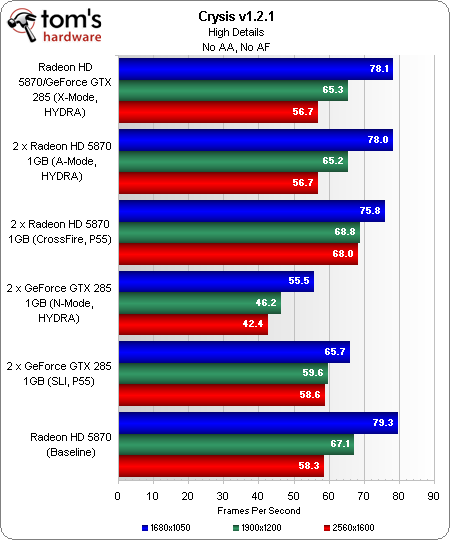MSI Big Bang Fuzion: Pulling The Covers Off Of Lucid’s Hydra Tech
Features
By
Chris Angelini
published
Benchmark Results: Crysis
Another title not on Lucid’s list, Crysis couldn’t be manually added without crashing, so it’s at least good to see the technology rendering to a single card as we’d expect it to in this situation.
The proof is in a simple comparison to the baseline Radeon HD 5870 scores, which match the X- and A-mode results. Apply anti-aliasing, though, and the CrossFire’d configuration starts to stand apart in a more noticeable way.
N-mode, where the GeForce GTX 285 is the primary adapter, is naturally going to be slower than a pair of 285s in SLI when no game profile is available to Lucid’s Hydra engine.
Stay On the Cutting Edge: Get the Tom's Hardware Newsletter
Get Tom's Hardware's best news and in-depth reviews, straight to your inbox.
Current page: Benchmark Results: Crysis
Prev Page Benchmark Results: S.T.A.L.K.E.R.: Call Of Pripyat Next Page Benchmark Results: Left 4 Dead 2TOPICS
Chris Angelini is an Editor Emeritus at Tom's Hardware US. He edits hardware reviews and covers high-profile CPU and GPU launches.


